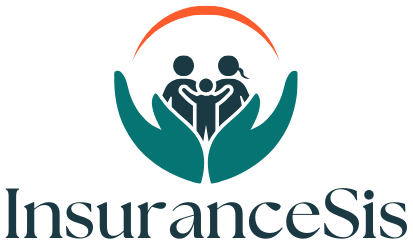
What Happens When A Term Life Insurance Expires?

What Happens When A Term Life Insurance Expires?
You may still require coverage for a number of reasons after your term life insurance policy expires. Although it’s typical to buy term insurance with the hope that your debts would eventually diminish, you may need to extend your coverage due to things like additional financial obligations, dependents who still require support, or persistent debts.
When a term policy expires, the policyholder usually doesn’t need to do anything. There is no death benefit, premiums cease, and the insurance company sends out a letter. The policyholder would get a check for the premiums paid during the term if the insurance has a return of premiums feature.
Furthermore, after the initial term ends, some term insurance includes the opportunity to renew annually. Although renewal keeps the same level of coverage, it usually costs more each year because of increases in risk associated with aging. For people who experience health problems that make it difficult to get new insurance, this alternative is helpful.
Purchasing Coverage After You Outlive Your Term Life Insurance
Long before the term policy’s termination date, those who may require additional coverage when it expires might wish to begin considering their possibilities. In this manner, you will have time to benefit from the conversion rider in your insurance, assuming it is available and appropriate for your situation. It’s crucial to remember that once the policy is in effect, you usually can’t add a conversion rider. It may or may not be included from the beginning, depending on the insurer.
Term Conversion
As previously stated, a term conversion rider is a feature of many term policies that enables you to change your term insurance into a permanent one without having to undergo a medical examination. Each policy has a different period for this conversion.

While some policies enable conversion till the end of the term, others only allow it for a limited time, like the first few years. A policy with a 20-year term, for example, might only allow conversion for the first 15 years. If you wish to convert without supplying proof of insurability, certain conversion restrictions usually apply. You will typically have to go through medical underwriting if you want to convert after the allotted time.
For people who require life insurance after their term policy expires but have a medical condition or become otherwise uninsurable, the term conversion is a calculated decision. Converting an existing term policy can be a more affordable choice than filing for a new one, which might be more costly due to health changes. Conversion rates are determined by the risk class that was initially assigned when the policy was obtained, usually without the need for a fresh medical examination.
Renew Your Term Coverage
The majority of term life insurance plans allow for renewal for a set number of years without requiring proof of insurability.
This implies that even if your health has altered, you can still renew your coverage. For example, a policy with a 10-year term may be renewed annually for a maximum of 10 more years. Your premium will rise in accordance with your current age at each renewal.
This renewability option is very helpful if you acquire serious health concerns because it guarantees ongoing financial security for your family without requiring a new medical exam, even though rates for renewed plans usually climb dramatically each year. The possible premium rise or inability to obtain a new policy if you were to reapply after receiving a major medical diagnosis is typically more significant than the premium increase brought on by your age at renewal. Because of this, the renewability trait is a useful defense against the unpredictabilities of future health problems.


Purchase A New Term Policy
Buying a new term policy could be the most affordable life insurance choice for those who are healthy and relatively young. For those who need less coverage than they did when they bought their first term policy, a shorter term and a significantly lower death benefit may also result in lower premium expenses.
An extra 10-year insurance, for instance, might guarantee that a dependent has finished college and is no longer in need of financial assistance from their parent’s salary if their 20-year term policy expires while their youngest child is still in high school.
Keep in mind that any new term policy will probably require a medical examination as part of the underwriting procedure, and the rate will probably go up if there have been any new health problems since the first policy. Another consideration is age, older individuals pay more for term life insurance.
Purchase A Permanent Policy
After the term policy expires, people without a term conversion rider can also get a permanent life insurance policy. Whole life insurance and other permanent life insurance policies can cost up to ten times as much as term life insurance. However, depending on individual circumstances and policy decisions, the price may differ. Putting money aside for a moment, permanent life insurance has the following advantages:
- Lifetime Coverage: As long as payments are paid, permanent insurance provides coverage for the policyholder for the duration of their life. However, the maximum coverage age range that insurers commonly specify is 95 to 121, which is also the typical lifetime in this situation.
- Cash Value Component: A tax-deferred cash value component that increases over time is a feature of these policies. The monetary worth may be taken out or pledged as security for a loan.
- Safe Investment: The cash value component is generally regarded as safe and can be a crucial component of financial planning, but it should not be your main source of retirement savings, even though it might not yield as much income as some other assets, such as the stock market. Life insurance is not an investment product, it is insurance.
Permanent life insurance comes in a variety of forms, each with special characteristics. The typical items you will encounter are as follows:
- Whole Life Insurance: Provides a cash value component that increases at a guaranteed pace, fixed premiums, and a guaranteed death payout.
- Universal Life Insurance: Offers adjustable death benefits and premiums, along with a cash value component that accrues interest at either a fixed rate or current market rates.
- Indexed universal life insurance is comparable to universal life insurance, but it offers the possibility of larger profits by including a cash value component linked to a stock market index.
- Policyholders can invest in several sub-accounts with variable universal life insurance, which combines the flexible advantages of universal life insurance with investment alternatives for the cash value component.
Permanent plans can be helpful in some circumstances, but because of their higher cost, they are not advised for everyone. They might be perfect, for instance, for those who have a disabled child who will never be able to support themselves financially or for a non-working spouse who would require financial assistance in the event that the major earner passes away.
Final Expense Insurance
In the US, the average funeral expenses come to $8,300. Final costs or burial insurance is a sort of permanent insurance to think about for people who don’t want to burden their heirs with end-of-life expenses and don’t want a sizable payout. Final expenditure life insurance isn’t the greatest choice for replacing lost income because it sometimes has limited coverage limits, capped at $10,000 or $25,000. Because there is no need for a medical examination and the insurance company takes on greater risk, the premiums are also relatively high. The cost will increase with the policyholder’s age and for additional coverage, as is the case with similar types of insurance.
For elderly people whose main objective is to shield their beneficiaries from the financial burden of their passing, final expense insurance may be a wise option. It might also be appropriate for those who are rejected regular life insurance or have pre-existing medical issues.


Conclusion
For greater premiums, you can frequently switch your term life insurance policy to a permanent life plan. If you continue to pay your premiums on time, this coverage will endure for the rest of your life. It has a cash value growth component that can be used as a tool to increase wealth.
The insurer contributes a portion of each premium payment to the cash value. It may grow tax-deferred at a particular rate, depending on the type of policy. Whole life insurance products from Aflac, for instance, enable you grow your cash worth at a predetermined, guaranteed rate.
You can take money out of it or borrow against it as you build up cash worth. Your insurer may give you the cash value of your insurance less surrender fees if you decide you no longer need coverage and surrender it. Keep in mind that there may be tax repercussions if you use your cash worth in these ways.
FAQ
No, with a standard term life insurance policy, you won’t receive anything back if you outlive your life insurance. So, what happens at the end of your term life insurance? Your life insurance will simply expire, and you can either take out a new policy or look into other types of financial protection.
If your term life insurance expires and it’s too late to renew or extend coverage, you can buy a new term life insurance policy. This may allow you more flexibility in choosing the policy term, but you’ll likely have to take a new medical exam to get coverage.
While you can’t cash out term life insurance, you can sell your policy. Additionally, you may have other options to change your coverage, such as lowering your premium payments or converting to a permanent policy.

